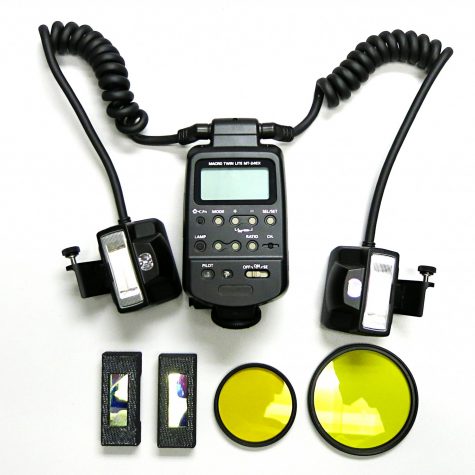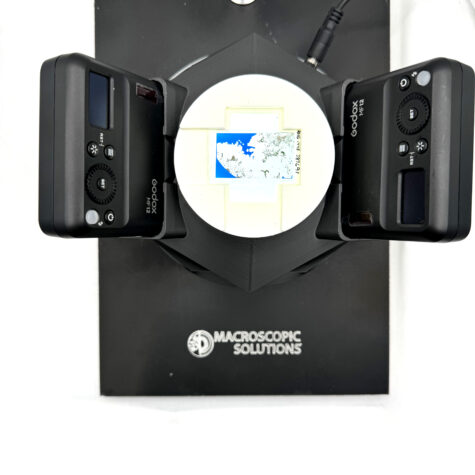Fluorescence Kit
$599.00The Excitation Filters will convert the Macropod into a system that is capable of capturing fluorescence. They will work with any camera utilizing the MT-24 EX Dual twin lite flash by Canon. It is recommended that the Macropod be used for magnifications greater than 5x due to the reduced levels of light being emitted.
Blue excitation fluorescence filters are designed with a narrow passband excitation range (20 nanometers) in order to minimize autofluorescence and photobleaching. The longpass barrier (emission) filter is capable of transmitting signals from green, yellow, and red fluorophores that have significant absorption in the upper blue wavelength region. The filters have a longpass dichromatic mirror with a cut-on wavelength of 505 nanometers.


















